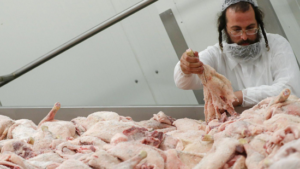Muslims are subject to special dietary restrictions. This can make meal preparation and grocery shopping a little challenging. However, you may traverse the world of food labeling if you have a basic understanding of how to read a Halal food label. You can use the information in this blog post to help you understand how to read a halal food label and what to look for, and what to avoid when choosing what to eat.
How can you tell whether a food item is genuinely Halal?
Muslims must be cautious about what they eat. But precisely what does that mean? How can you determine whether a food is genuinely Halal? There are several methods for doing this.
To ensure that the food has been prepared in accordance with Islamic law, see if it is certified as Halal.
This involves making sure the dish was prepared according to Islamic law and that it didn’t contain any prohibited items. If food is Halal-certified by Halal Monitoring Authority Canada(HMA), it typically has an HMA Halal symbol on the packaging.
Make sure all of the ingredients are halal by reading the food label.
Unfortunately, not all manufacturers of Halal meat in Toronto mark their items as Halal, so you will need to know what components to seek out. For instance, some emulsifiers, preservatives, and food additives are manufactured from non-Halal animal products. If the product contains gelatin, it is most likely derived from pig unless specifically specified to be vegetarian or fish-based, Halal certified, gluten-free certified, or even kosher certified in rare situations. Although many rabbis consider animal byproducts, such as collagen and gelatin, to be kosher pareve (neutral and permissible), regardless of whether the animal was killed in a Halal way, one cannot exclusively rely on the halal mark. According to Islamic law, this is unacceptable.
Food businesses must include all of the components in their products on the label because the food sector is heavily regulated. Essential ingredients, food additives, preservatives, colourings, and flavorings are all included in this. Some of these items are not Halal, which could surprise you. For instance, many enzymes, emulsifiers, flavorings, and food colourings are Mushbooh (uncertain and questionable) because consumers need to know where they come from.
Gelatin, emulsifiers, and monoglycerides are a few additional typical Mushbooh constituents. Although these substances can originate from halal and haram sources, it is frequently challenging to ascertain their provenance. Because of this, many Halal consumers err on the side of caution and refrain from consuming items that include them unless they have Halal certification.
However, selecting a Halal food item certified by a respected organization like HMA Canada is always preferable if you’re looking for one. You may be sure that your meal is halal in this way.
At HMA Canada, we provide a widely accepted Halal certification and ensure that the food items we certify adhere to Halal meat or dietary laws. Our mission is to increase awareness and motivate people to choose Halal foods intentionally.To find out the status of a product with a halal label, you could get in touch with HMA or any other halal certifier directly.
How should a Halal food label be read?
It can be challenging to read Halal food labels, especially if you need help understanding all the terminology. Listed below is a brief guide to understanding a halal food label:
Enzymes.
By default, enzymes made from haram animals or their derivatives are regarded as haram. Halal consumers are concerned about the origin of animal enzymes. Enzymes from microorganisms and plants are typically OK. However, they should be carefully examined or approved by the Halal sector.
Gelatin.
Efforts have been made to make gelatin from Halal sources—such as fish, fowl, and beef that was slaughtered in conformity with Islamic law. Therefore, it is essential to read food labels to determine whether the gelatin used in the dish is from a legal source and whether the final product has a Halal certification.
Flavorings.
Food is given a flavor boost through the use of flavorings. They may be synthetic or natural and derive from halal or haram sources. For food to be deemed Halal, any flavoring that comes from an animal source must do so in an acceptable way.
Food additives.
Food additives are present in processed and unprocessed foods, and they can be either natural or artificial. While some chemicals have been related to health issues, others are considered safe for human ingestion. Muslims are worried about the safety of food additives and whether they are Halal. As a result, you should always read the food label to see whether the ingredient comes from a legal source and whether the final product has a Halal certification.
You can choose what to eat and what to avoid now that you know more about reading a Halal food label. Before buying or eating any food goods, be sure to read the food label thoroughly. Look for the genuine Halal emblem on food products, and review the ingredients list for any red flags.
You can also phone the manufacturer to learn more about their ingredients and request that they exclusively use Halal ingredients. The supply will come into being if the demand is high enough!




